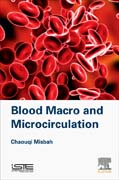
Blood represents a very challenging fluid medium in terms of theoretical description because of the scale-dependent changes of its properties and its complex mechanical and biochemical structure. Pathologies associated with blood flow and cardiovascular dysfunctions are the primary cause of mortality in the world. Intense multi-disciplinary research has now born across many disciplines, which has promoted innovative experimental and computational approaches to study blood flow at different scales and complexities and identify the key elements that trigger cardiovascular disorders. This book presents in a pedagogical way the tremendous recent progress achieved in the field of blood flow at both micro and macroscales and with increasing complexities integrating physical, chemical and biological factors. It constitutes a unique backup of idea evolutions from the early 19th centuries to nowadays and the tremendous recent progresses in experiments and simulations. It also lists future challenging issues constituting a plethora of major questions spanning the spectrum of fundamental and applied blood flow science A balanced mixture of theory simulations and experimentsA clear evolution of ideas from 19 centuries to nowadaysA description of blood flow at different scalesA link between physical, chemical and biological factors in blood flow and diseasesA description of recently solved problems and open issues to trigger new future ideas INDICE: 1. A history of blood flow from Poiseuille to today2. Description of phenomenological models and their success and limitations3. Description of a bottom-up approach of blood flow4. Blood flow at different scales5. Blood flow in complex networks6. Link between physical, chemical and biological factors7. Open issues
- ISBN: 978-1-78548-192-5
- Editorial: ISTE Press - Elsevier
- Encuadernacion: Cartoné
- Páginas: 300
- Fecha Publicación: 01/09/2018
- Nº Volúmenes: 1
- Idioma: Inglés
